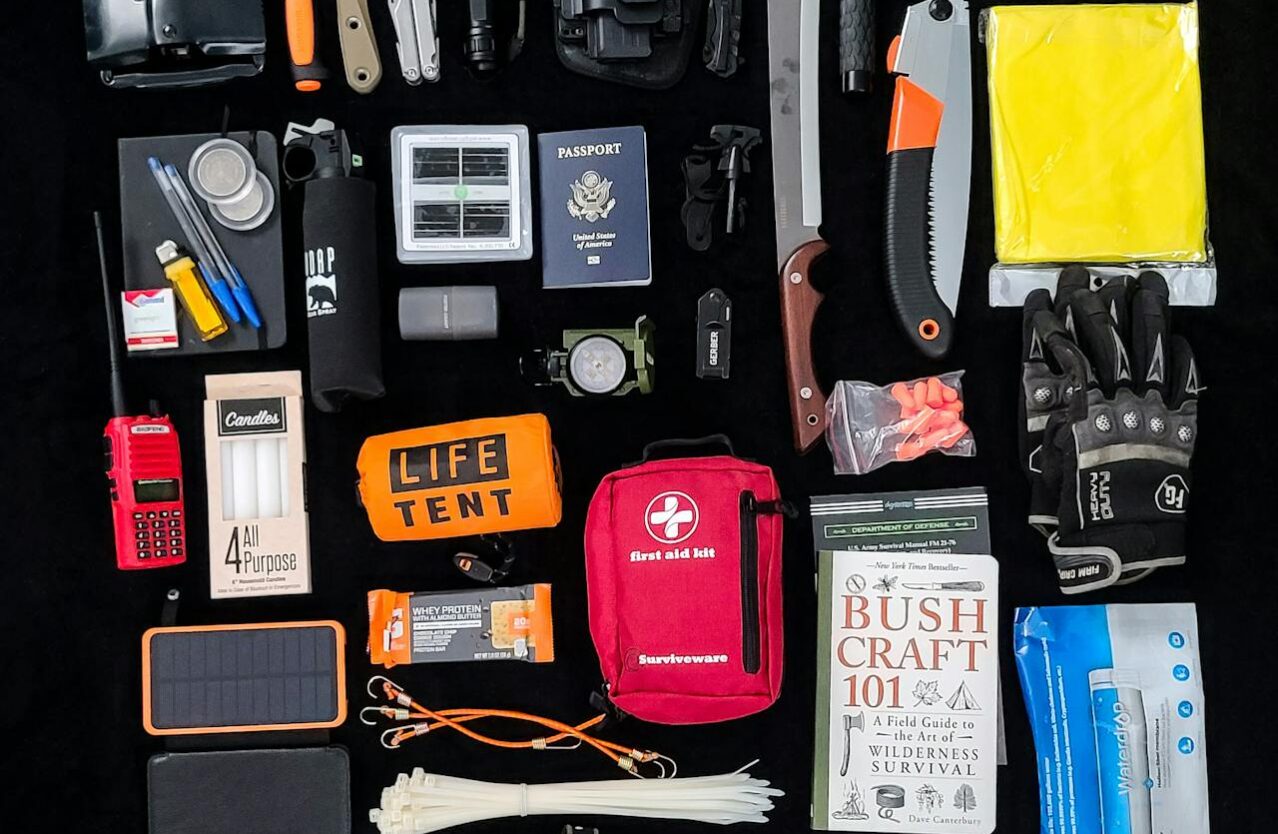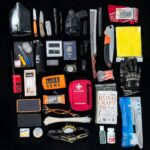July 9 is International Emergency Kit Day, a day to raise awareness about being prepared when disaster strikes. An emergency kit, sometimes called a go bag or disaster bag, is a portable kit that has essentials you and your family need to survive in case of an emergency. They are easy to grab when you need to evacuate for whatever reason, usually a natural disaster. This day is a reminder to check your kit or build one today; it will make all the difference when an emergency happens.
History of International Emergency Kit Day
The idea of emergency preparedness kits goes back to WWII when civilians were given survival guides by governments. These guides gave instructions on what to do and where to go in an emergency and also encouraged families to prepare shelters that had emergency supplies. Emergency preparedness reached fever pitch during the Cold War when fallout shelters were popular. Some of these were fully built-out underground homes that were stockpiled with supplies to last a long time.
While some sort of federal emergency department has existed in the U.S. for many years, it wasn’t until 1979 that the Federal Emergency Management Agency was legally created. President Jimmy Carter signed Executive Order 12127, which saw the creation of this agency. FEMA promoted the 72-hour kit, encouraging families to ensure they can be self-sufficient for at least three days. In the last two decades, natural disasters and other emergencies have highlighted how crucial it is to have an emergency kit prepared.
Today’s emergency kits reflect lessons learned from decades of disasters, incorporating modern technology such as solar chargers and water purification systems while maintaining focus on basic survival necessities that have remained constant throughout history.
International Emergency Kit Day FAQs
What is in an emergency kit?
An emergency kit is a collection of essential supplies that you will need to survive a disaster or emergency situation.
What are 10 items to include in an emergency kit?
These are the essential items to pack in your kit: Non-perishable food and water, flashlight and extra batteries, communication devices, change of clothes and shoes, first aid kit, eyeglasses and hearing aids, hygiene and sanitation supplies, medications and medical equipment, sleeping bags and blankets, health information and identity documents.
How to prepare for emergencies?
There are a number of steps you can take to prepare yourself for emergencies and disasters. This includes creating an emergency plan, assembling disaster supplies kits, knowing where to seek shelter from all types of hazards, and identifying the community warning systems and evacuation routes.
International Emergency Kit Day Activities
Check your current emergency kit
Take inventory of what emergency supplies you already have at home, in your car, and at work. Check expiration dates on food, water, medications, and batteries. Create a list of missing items that need to be purchased or updated to ensure your emergency kit meets current safety standards.
Build your 72-hour kits
Assemble a comprehensive emergency kit that can sustain your family for at least three days without outside assistance. Include essential items such as water, non-perishable food, first aid supplies, flashlights, batteries, and important documents. Store everything in waterproof containers and keep kits easily accessible in multiple locations.
Do practice scenarios with your family
Conduct emergency drills with your household to ensure everyone knows where emergency supplies can be found and how to use them properly. Practice different scenarios like power outages, severe weather, or evacuation procedures. Assign specific responsibilities to each family member and review your emergency plan regularly.
5 Necessary Emergency Kit Items
Water and water storage
Store at least one gallon of water per person per day for drinking, cooking, and basic hygiene needs.
First aid supplies
First-aid kit should include bandages, antiseptic wipes, pain relievers, prescription medications, thermometer, and emergency contact information — don't forget any special medication such as inhalers or insulin.
Non-perishable food
Ensure there is a three-day supply of foods such as energy bars, canned food, dried fruit, and nuts — pack a can opener too.
Important documents
Make physical and digital copies of IDs, medical records, and insurance policies and store them on a USB and in waterproof containers.
Flashlights and batteries
Store flashlights and extra batteries in kits and throughout the house.
Why We Love International Emergency Kit Day
It encourages family safety and preparedness
Preparing an emergency kit together can be a good opportunity to discuss any questions family members may have. It's a chance to educate and reduce anxiety about disasters or emergencies.
It gives you peace of mind
Don't let unexpected events catch you off guard! A good emergency kit can really help. Knowing you have all the essentials on hand allows you to stay calm and think clearly, which is just as important as having the supplies themselves.
It fosters community
Well-prepared individuals strengthen entire communities by reducing the burden on emergency services during disasters. When neighbors are equipped with proper emergency supplies, they can assist each other and contribute to overall community recovery efforts. Emergency preparedness creates a ripple effect that benefits everyone in the area.
International Emergency Kit Day dates
| Year | Date | Day |
|---|---|---|
| 2026 | July 9 | Thursday |
| 2027 | July 9 | Friday |
| 2028 | July 9 | Sunday |
| 2029 | July 9 | Monday |
| 2030 | July 9 | Tuesday |










